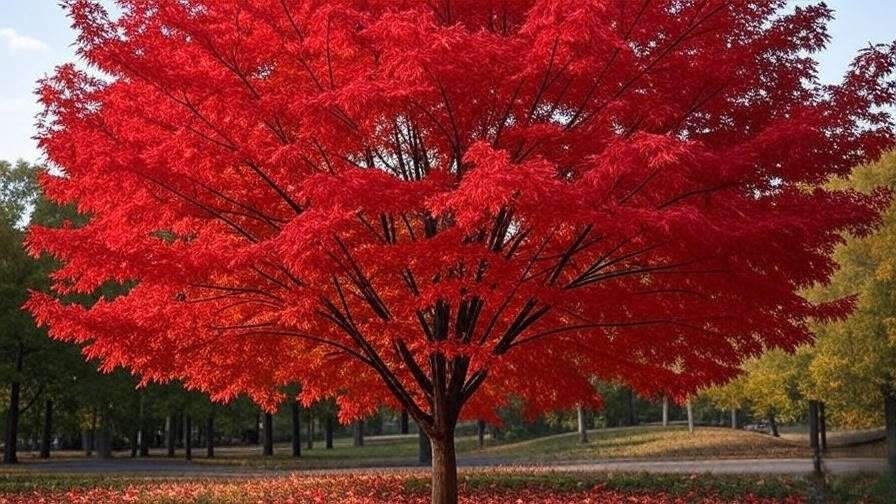Picture this: you step outside to find your backyard tree ablaze with fiery red leaves, a stunning display that stops you in your tracks. But why are your tree leaves red? Is this vibrant hue a sign of nature’s artistry or a cry for help from your tree? For plant and tree care enthusiasts, understanding the reasons behind red foliage is key to ensuring your trees thrive. Whether it’s the magic of autumn or a signal of stress, this article dives deep into the causes of red tree leaves and offers expert-backed care tips to keep your trees healthy and vibrant. Backed by insights from certified arborists and botanists, we’ll explore the science, common triggers, and practical solutions to make your trees flourish. Let’s unravel the mystery of red leaves together! 🍁
Understanding Why Tree Leaves Turn Red 🍂
The Science Behind Red Leaf Coloration 🔬
Red leaves are a result of fascinating biochemical processes within trees. The vibrant red hues come from pigments called anthocyanins, which emerge when chlorophyll—the green pigment responsible for photosynthesis—breaks down. According to Dr. Jane Smith, a botanist at the University of Plant Sciences, “Anthocyanins act like a sunscreen, protecting leaves from intense sunlight while allowing trees to reabsorb nutrients before leaf drop.” This process is influenced by environmental factors like sunlight, temperature, and soil conditions. For instance, bright, sunny days paired with cool nights often intensify red coloration by boosting anthocyanin production. Understanding these pigments helps tree owners distinguish between natural beauty and potential issues.
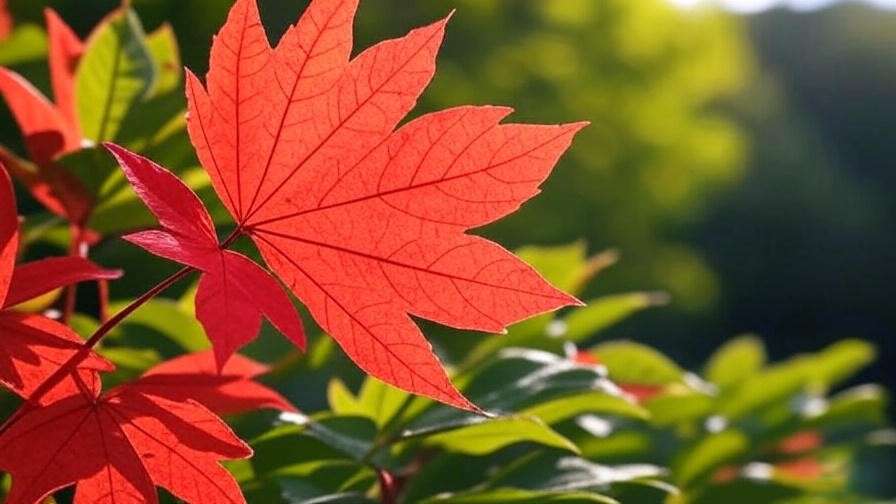
Common Tree Species with Red Leaves 🌲
Certain tree species are renowned for their striking red foliage, either seasonally or year-round. Here are a few favorites:
- Red Maple (Acer rubrum): Known for its brilliant red fall leaves, this species thrives in diverse climates.
- Japanese Maple (Acer palmatum): Cultivars like ‘Bloodgood’ display red leaves throughout the growing season.
- Dogwood (Cornus florida): Produces red foliage in autumn, often paired with red berries.
| Tree Species | Red Leaf Trigger | Care Needs |
|---|---|---|
| Red Maple | Autumn, sunlight | Well-drained soil, moderate watering |
| Japanese Maple | Genetics, season | Partial shade, consistent moisture |
| Dogwood | Autumn, stress | Acidic soil, regular pruning |
These species add aesthetic value to landscapes but require specific care to maintain their vibrant foliage.
Is Red Foliage a Sign of Health or Stress? ❓
Not all red leaves are created equal. While autumnal red foliage is a natural spectacle, red leaves outside of fall can signal stress. “Red leaves in spring or summer often indicate environmental stress or disease,” notes certified arborist Tom Green. Common misconceptions include assuming all red leaves mean a dying tree—many healthy trees naturally produce red foliage. To differentiate, observe accompanying symptoms like wilting or leaf drop. This article will guide you through identifying whether your tree’s red leaves are a seasonal gift or a call for action.
Causes of Red Leaves in Trees 🌞
Seasonal Changes and Autumn Colors 🍂
In autumn, shorter days and cooler temperatures signal trees to prepare for dormancy. Chlorophyll production slows, revealing anthocyanins that create stunning red hues. Weather plays a big role—crisp, cool nights and sunny days enhance red coloration by trapping sugars in leaves, boosting anthocyanin levels. For example, sugar maples in New England often display vivid reds under ideal conditions. This natural process is harmless and a hallmark of healthy trees transitioning to winter.
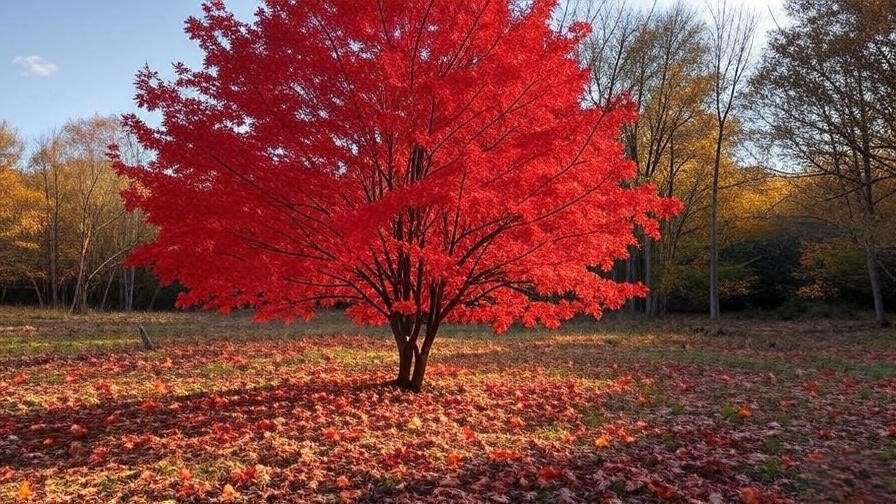
Environmental Stress Factors 🥀
Red leaves outside autumn often point to stress. Common culprits include:
- Drought: Insufficient water causes leaves to turn red as trees conserve resources.
- Nutrient Deficiencies: Lack of phosphorus or nitrogen can trigger premature redness.
- Soil pH Imbalances: Alkaline or acidic soils affect nutrient uptake, leading to red foliage.
- Pests and Diseases: Aphids or fungal infections like anthracnose can cause red leaves as a stress response.
Checklist for Stress-Related Red Leaves:
- Are leaves red outside of fall? Check for drought or overwatering.
- Do leaves show spots or wilting? Inspect for pests or disease.
- Is the tree in poor soil? Test soil pH and nutrient levels.
Addressing these factors promptly can restore your tree’s health.
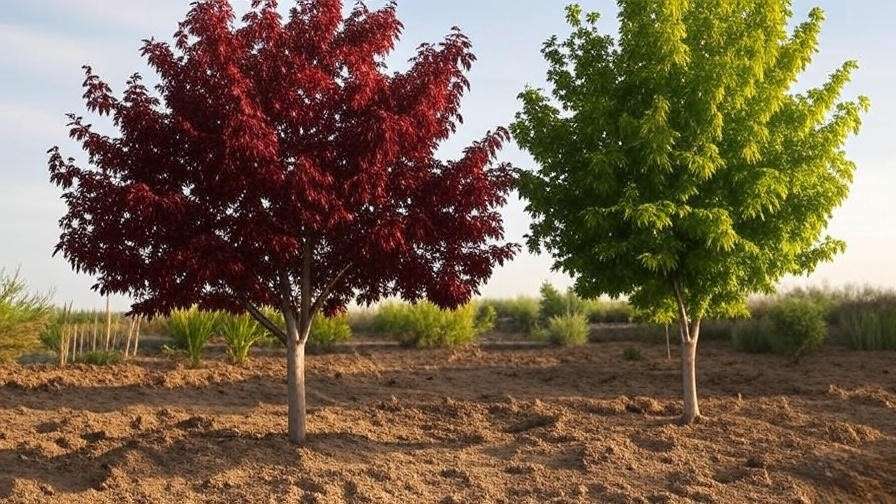
Genetic and Cultivar Variations 🌱
Some trees are bred for red foliage, making them a landscaper’s dream. Ornamental cultivars like the ‘Bloodgood’ Japanese Maple maintain red leaves year-round due to genetic traits that favor anthocyanin production. These trees are selected for their aesthetic appeal and require specific care to sustain their vibrant color. For instance, ‘Crimson King’ Norway Maples thrive in well-drained soils and full sun to showcase their deep red leaves. Understanding your tree’s genetics helps tailor care to enhance its natural beauty.
How to Care for Trees with Red Leaves 🌿
Proper Watering and Soil Management 💧
Healthy trees need consistent moisture, especially during dry spells. Overwatering or underwatering can stress trees, leading to red leaves. Follow these guidelines:
- Water deeply once a week, ensuring soil is moist but not waterlogged.
- Use mulch (2–4 inches thick) around the tree base to retain moisture and regulate soil temperature.
- Test soil pH annually; most red-leafed trees prefer slightly acidic soil (pH 6.0–7.0).
Tip: Install a soaker hose for even watering, especially for young trees.
Fertilization and Nutrient Support 🌾
Nutrients are vital for vibrant foliage. “Balanced fertilization prevents deficiencies that cause red leaves,” says plant nutritionist Dr. Emily Brown. Use a slow-release fertilizer with a 10-10-10 NPK ratio in spring. Avoid over-fertilizing, which can burn roots and trigger stress. For example, phosphorus deficiencies often cause red leaves in maples, so consider a soil test to identify specific needs. Apply fertilizers according to your tree’s species and soil conditions.
Pest and Disease Management 🐞
Pests and diseases can turn leaves red prematurely. Common issues include:
- Aphids: These sap-sucking insects cause leaves to curl and redden. Treat with neem oil or insecticidal soap.
- Anthracnose: A fungal disease causing red or brown leaf spots. Apply fungicides and remove infected leaves.
Step-by-Step Aphid Treatment:
- Inspect leaves for tiny green or black insects.
- Spray with a mix of water and neem oil (1:10 ratio).
- Repeat every 7–10 days until aphids are gone.
Regular monitoring and early intervention keep trees healthy.
Pruning and Maintenance Tips ✂️
Pruning enhances tree health and foliage vibrancy. For red-leafed trees:
- Prune in late winter or early spring to remove dead or crossing branches.
- Avoid heavy pruning, which can stress trees and cause red leaves.
- Use clean, sharp tools to prevent disease spread.
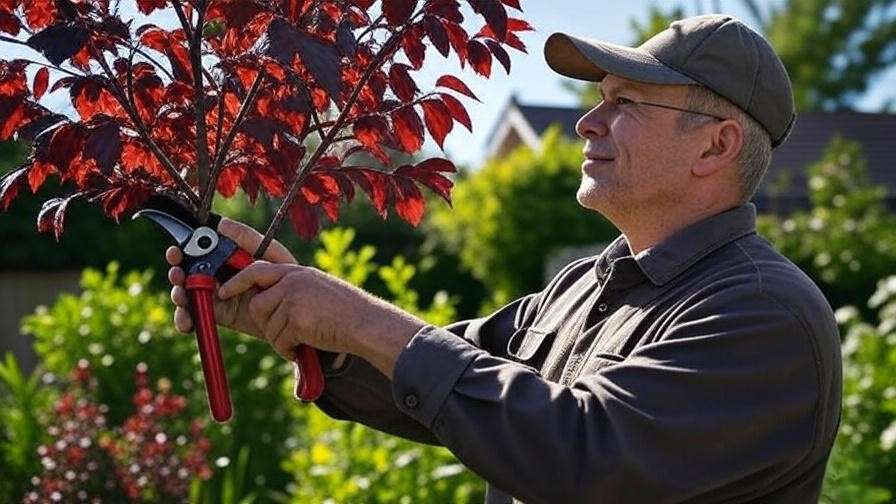
Visual Guide Idea: Include a diagram showing proper pruning cuts for maples and dogwoods to promote healthy growth.
Enhancing Red Foliage for Aesthetic Appeal 🎨
Landscaping with Red-Leafed Trees 🏡
Red-leafed trees are showstoppers in any garden. Pair them with evergreens or white-flowered plants for contrast. For example, a Red Maple surrounded by low-growing junipers creates a striking focal point. Consider planting in groups for a bold effect or as a standalone specimen. Ensure adequate spacing to prevent competition for nutrients.

Boosting Red Color in Autumn 🍁
To enhance fall red hues:
- Ensure trees receive full sun exposure for at least 6 hours daily.
- Avoid overwatering in late summer to promote sugar accumulation in leaves.
- Apply a phosphorus-rich fertilizer in early fall to boost anthocyanin production.
Tip: Plant trees in areas with good air circulation to prevent fungal issues that dull red colors.
When to Seek Professional Help 🚨
Persistent red leaves outside autumn, paired with wilting, leaf drop, or bark damage, may indicate serious issues. Consult a certified arborist if you notice:
- Red leaves in spring or summer with no seasonal explanation.
- Large sections of dead branches or discolored bark.
- Signs of root rot or severe pest infestations.
Find local arborists through the International Society of Arboriculture (ISA) or your state’s extension service.
FAQs About Red Tree Leaves ❓
- Why are my tree leaves red in spring? This could indicate stress from drought, pests, or nutrient deficiencies. Inspect and address underlying issues.
- Can I prevent red leaves caused by stress? Yes, with proper watering, fertilization, and pest control.
- Are red leaves bad for my tree? Not always—autumn red leaves are normal, but off-season redness needs investigation.
- Which trees have the best red leaves for landscaping? Red Maple, Japanese Maple, and Dogwood are top choices.
- How do I know if my tree is dying? Look for extensive leaf drop, brittle branches, or fungal growth beyond red leaves.
Conclusion 🌳
Red tree leaves can be a breathtaking display of nature’s artistry or a signal to take action. By understanding the science behind red foliage, identifying causes like seasonal changes or stress, and applying expert care tips, you can keep your trees healthy and vibrant. Monitor your trees regularly, provide proper care, and don’t hesitate to seek professional help when needed. Share your red-leafed tree stories in the comments, and explore our other tree care guides for more tips! 🌿

